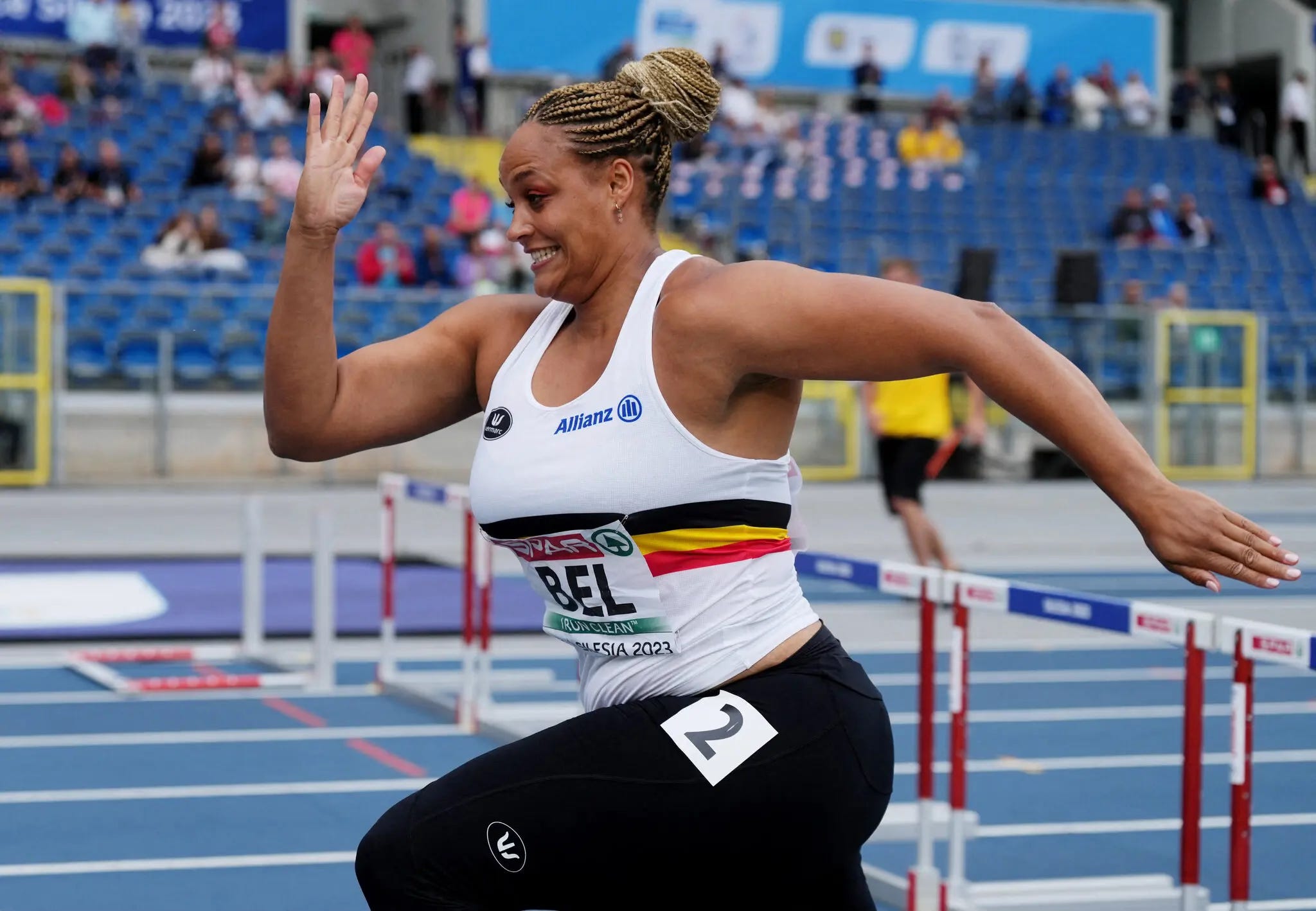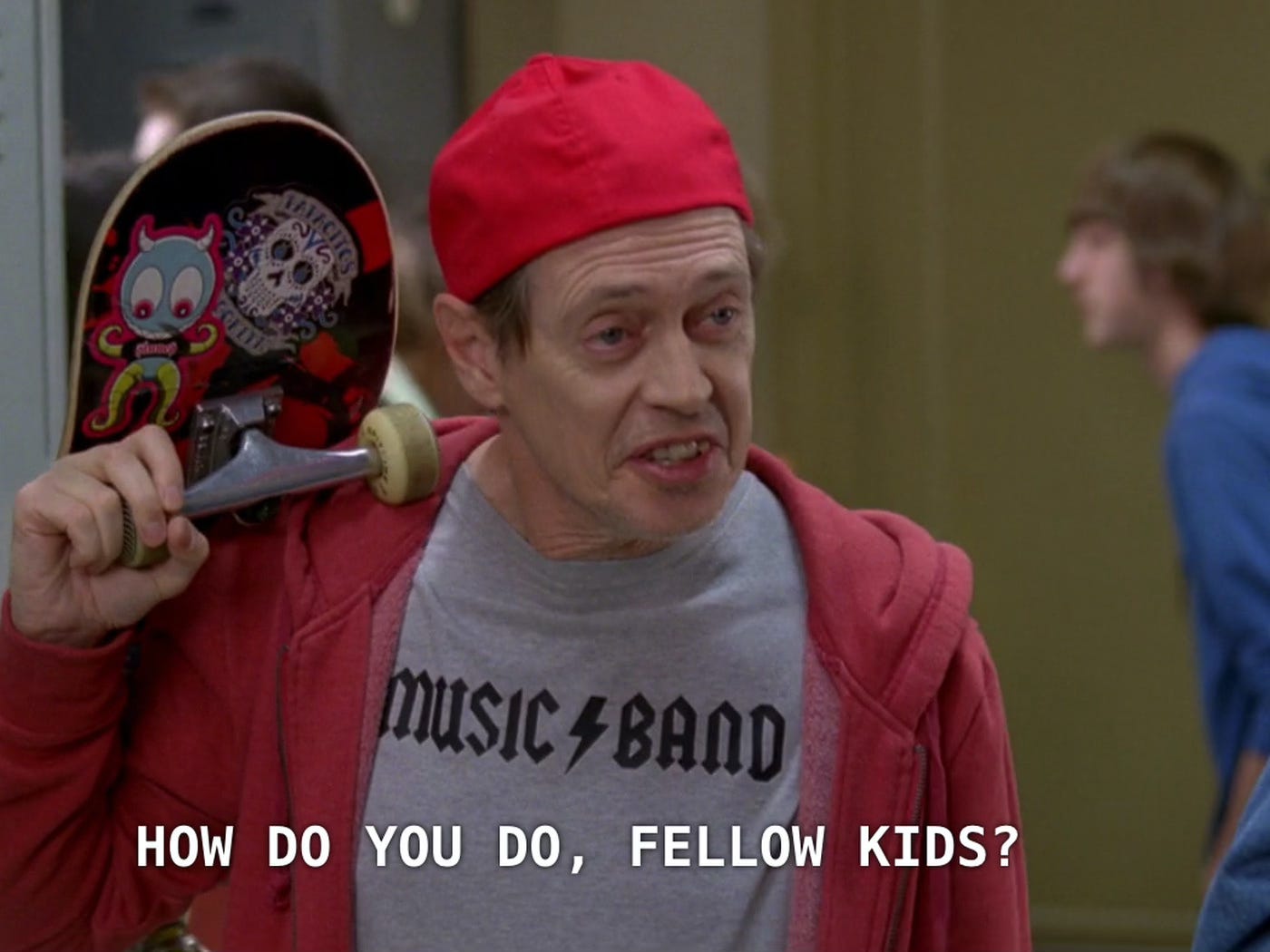What's Good? The Year in Fitness (Technology)
Part 2 of my annual review of all things tech, and I made it through this whole essay without mentioning B. F. Skinner once even though I still see behaviorism everywhere
Welcome to the second essay in the first annual Second Breakfast "Top Trends" series. Last week's missive looked at the year in food and food technologies; today we're tackling fitness and fitness technologies. (There are a ton of ways in which these two overlap: hydration and supplementation — with protein or caffeine or otherwise, for starters. This year, we also heard the whole "it was a pork burrito that made me fail the doping test" debacle, as well as the "I put mayonnaise in my coffee and wasn't picked in the first round of the NFL draft" saga. Me, I’m still trying to make sense of how all this fits together, coherently, in one newsletter.)
In September, sports journalist Christine Yu christened this the "summer of women's sports,” and I daresay we could say that about the whole year — Coco Gauff won the US Open. Simone Biles became the most decorated gymnast in history. Megan Rapinoe played her final soccer game. The Nebraska women's volleyball team sold out the football stadium. The Spanish national football team won the World Cup and did not let that POS federation president get away with being a POS. There was a film about Diana Nyad (and Nyad changed her mind about trans athletes — another win). Sha'Carri Richardson won the 100 meter title at the World Athletics Championships — the fastest woman in the world. Tigist Assefa shattered the world record in the marathon by over two minutes. Faith Kipyegon set world records in the mile and in the 1500 meter and in the 5K. It was an incredible year for me, as a woman athlete: I ran my first and my second and my third half marathon, PR-ing each time around. I started swimming again regularly; I bought a bike; I'm still lifting, deadlifting and squatting more than I weigh.

There were plenty of other stories about sports — professional and amateur — and I hear men can be athletes too. It was a big year for Lionel Messi's pink shirt, for example. And the NFL was lucky that, despite being politically and physiologically terrible, Taylor Swift helped give the league some shine, by dating some guy who apparently plays for one of teams. In her Person of the Year article in Time, Swift reveals her own athleticism, describing the rigorous training she undertook for her Eras tour:
"Every day I would run on the treadmill, singing the entire set list out loud," she said. "Fast for fast songs, and a jog or a fast walk for slow songs." Her gym, Dogpound, created a program for her, incorporating strength, conditioning, and weights. "Then I had three months of dance training, because I wanted to get it in my bones," she says. "I wanted to be so over-rehearsed that I could be silly with the fans, and not lose my train of thought."
I am an old person now, and I confess: I'd never listened to Taylor Swift before this year. She's fine, I guess, and it's nice that between her and Barbie, conventionally attractive blond women finally gained some recognition — not just for their odd physical features but for their physical and political power.
We're often told we live in an age of "information abundance," but what that really means, in fact, is not so much that there’s too much data, too much to read and watch but that our attention, which remains in limited supply, feels really squeezed. There are a zillion things I could say about sports and sports technology — and bless your heart if you read all 4000+ words of this newsletter. But there's only so much I have been able to pay attention to this year — based, I will admit, on my own interests and my own activities. Like, I totally missed out on almost all the pickleball news — so much so I don't know if pickleball is "in" or "out" anymore. Can't really tell you anything about basketball or baseball either. There were certainly some important stories about the struggles at Pure Barre and Club Pilates franchises; about the failure of Mirror, LuluLemon's fitness tech hardware; about the future of Peloton, post-pandemic — these are all very much stories about the cultural and economic expectations of women's bodies (and tech). But I mostly missed them (or at least neglected to think about too deeply until I started working on this year-end review which is why I do this whole thing in the first place). We only have so much attention; we only have so much time. As I noted in last week's newsletter, this is a new field of research for me, and I'm pretty uncertain about what I know and don't know and should know. I mean, that doesn't stop me from churning out a very very long essay here, mind you. (Nor does it stop me from having some very strong opinions — strong opinions, loosely held a lot of the time.)
One of the things I have paid a lot of attention to, particularly in my sport of choice, running, is the idea of "inclusion." I've witnessed the running community (with some exceptions — looking at you, Tracksmith and BAA) make great strides towards welcoming all bodies at all paces this year: the publication of Martinus Evans' Slow AF Run Club1 and the recognition, particularly by race directors, that more allowances should be made for "back of the pack" runners; accommodations for pregnant women and nursing mothers at major races; the exemption granted by the US Anti-Doping Agency to non-binary runner Cal Calamia to allow them to continue race and to continue taking testosterone as part of their transition, for example. Despite Calamia's win (and Nyad’s change of heart), the news for trans people, athletes or otherwise, has been far from uniformly positive, with multiple states in the US working to curb access to gender-affirming health care and to ban trans girls and women from competition. (A reminder that the policing of women's bodies always plays out most violently for Black women. Recommended reading: Caster Semenya's memoir The Race to Be Myself.)
Okay, you might ask, but what does this have to do with technology, Audrey?
Far from being neutral, technologies play a role in shaping inclusion and exclusion.
It's been incredible, for example, to see sport after sport start to address the legacy of toxic coaching; but we might want to think about the ways in which these practices are being (have been) hard-coded into the apps that promise "algorithmic coaching." Whose bodies, moving at what pace, are these tools designed for?
Whose bodies, moving at what pace, are these tools designed for? We can ask the same question about what has been, for runners at least, the biggest technology trend of the year (of the last few years, arguably, but much like "Zone 2 training,” we keep rebranding old ideas as innovation): the "super shoe," the expensive, carbon-plated sneakers on more and more runners' feet — at races and in training. No longer are these shoes just the purview of Nike — all the big brands want a share of this market, with Adidas in particular capturing lots of positive media attention (despite the whole Yeezy mess) as its sponsored athletes won numerous races and broke numerous records wearing its versions.
Are these shoes the reason that so many records are being broken? Surely that's part of it. Are professional runners compelled to run in them? Yup — so the question of who sponsors you becomes even more crucial. Do amateurs too now feel compelled now to shell out the hundreds of dollars — $500 in the case of the latest Adidas model — for these shoes? Yup. It seems so. Not only does this challenge the notion that “running is for everyone” financially; these shoes have been designed to enhance the running economy of certain bodies at certain paces — that is, they’re quite literally made for the fastest professional runners in the world. There isn't a lot of scientific research on how these shoes might affect — good or bad — the rest of us.
But since when did a lack of scientific research ever stop anyone in late stage capitalism, right?
What we continued to see this year in fitness and, more broadly, in "wellness" is a lot of scientism and a lot of pseudoscience. Indeed, many writers have chronicled the ways in which "science washing" has spread — thanks in no small part to social media — throughout all industries. A lot of this, I'd argue, is a result of Internet technology, most obviously the spread of misinformation online. One could surely write a whole “Year in Review” on what social media influencers — and "old media" influencers — said and did in 2023. (RIP Suzanne Summers, one of the original sketchy influencers.)
Trail Running magazine recently asked, "Where is the line between influencer and athlete?" It's a good question because the financial arrangements of "influencing" and professional athlete-ing entail a lot of promoting sponsors’ products — shoes, obviously, but also things like KT tape, massage guns, vitamins and supplements, protein bars, sports bras, and blood testing kits, for starters. We've seen this sort of thing for ages, of course, with athletes as spokespeople in more traditional forms of advertising; but there's something that feels more intimate, arguably, about the relationship we have via folks we follow online. It can be incredibly difficult to know if this stuff works, and yet one feels compelled to listen when a “star” says it works for them. (Recommended read: Mike Caulfield and Sam Wineburg's Verified: How to Think Straight, Get Duped Less, and Make Better Decisions about What to Believe Online.)
But shit isn't weird in fitness technology simply because of the Internet. It's weird because the technology industry writ large, as I've argued elsewhere, carries with it certain ideologies — individualism, libertarianism, neoliberalism, efficiency — and it embeds these values in the products it designs and engineers. (Recommended read: Malcolm Harris's Palo Alto: A History of California, Capitalism, and the World.)
It's super weird because Silicon Valley is overrun right now with "bro science," and many of the best known bros are employed in and around Stanford University. (Seriously. Read Malcolm’s book.) Peter Attia, described by The Wall Street Journal as the "Favorite Doctor of Bio-Hackers and the Longevity Obsessed," for example. Or Andrew Huberman, described by The New York Times as "Goop for Him." "Bro science,” which seems to spread mostly via podcasting, promotes a lot of supplements and fitness gadgetry — sponsors of Huberman's podcast include Athletic Greens, Inside Tracker, LMNT, and Momentous; and surprise surprise he's also an investor and advisor in several supplement companies. "Bro science" pushes a lot of "diet culture" messaging, the kind that women have been bombarded with for generations, frankly. There were several stories this year that underscored that something … odd is afoot with men's body image: "My Balls-Out Quest to Achieve the Perfect Scrotum". "Inside the Secretive World of Penile Enlargement." Granted, these are extreme, and many of the suggestions "bro science" makes sound quite benign — take cold showers! wait 90 minutes after waking up to drink your coffee! get 20 minutes of sunshine on your face every day! All this surely works best if you are an affluent, child-free, white cis male living in the Bay Area in California. In "bro science," a clinical study becomes a lifestyle prescription — and that, my friends, is not how health science should work. Unless, of course, you’re at Stanford, and then really anything goes. ¯\_(ツ)_/¯ .
Side-note: there is perhaps no better example of the strangeness of bro-science, fitness culture, Silicon Valley, and male body politics this year than the cage match that never happened between Mark Zuckerberg and Elon Musk. I wrote about it here. All this violent macho fantasy is surely connected to why, as we learned from TikTok this year, men are perpetually thinking about the Roman Empire.
While it's easy, perhaps, to mock Goop for Her and for Him and Andrew Huberman’s embrace both of lifestyle efficiency and three-hour long podcasts, I think it's a mistake to not take seriously the wellness-to-fascism pipeline that some of this surely fosters. Marc Andreessen, a prominent Silicon Valley entrepreneur and investor, penned a full-throated embrace of technological authoritarianism this year — what he calls "techno-optimism" — with a manifesto that echoed the words of Italian Futurist (and fascist) Filippo Tommaso Emilio Marinetti. (I went to look up his investment company's portfolio in health and fitness tech because I do need to keep better track of where the money is going, and the manifesto is on the landing page of the blog. There is no shame, no regret, no fear among these men.)
OK, there's a little bit of fear, and I think we’re going to see this play out in the coming years for sure. Marc Andresseen, Elon Musk, and I were all born about a month apart in the summer of 1971. We're in our fifties now, and you can see the panicked response of Gen X and Boomer tech investors and entrepreneurs to aging with their support for all sorts of longevity "bio-hacks." Some bros are investing in companies in the hopes that someone finds the fountain of youth in machine learning or something; and some are spending millions of dollars of their own money on techniques that promise to keep their own bodies young forever. (Strangely, just as they’re investing in extending their lives, they’re also embarking upon the dumbest, most dangerous “adventures.” This was a record-setting year for deaths on Mount Everest, for example. And need we mention the whole Titanic submersible saga?!) I tell you: these men are not well.
To be fair, it's not just wealthy tech entrepreneurs who are taking measures to extend the quantity and quality of their lives. "Welcome to the senior fitness boom," MarketWatch announced earlier this year. (The line when someone becomes a "senior" varies. In sports, one becomes a "masters" athlete after 35, and one finds that "research done on older athletes" often means someone studied men in their late 30s. I guess when you’re in your 50s, it’s “senior fitness.” LOLSOB.) "Americans over 50 are doing extreme sports their grandparents never imagined," The Washington Post reported on the uptick in endurance running, downhill skiing, and skateboarding. According to The Wall Street Journal, "The New Midlife Fitness Flex: A Pull-Up." This is totally my jam, of course. Not the pull-up, to be clear. Can't do that yet. We can do a lot to stave off sarcopenia, and much of what we think about as an effect of aging may actually be an effect of inactivity.
That said, hoooboy, are we now a target market or what, particularly we post-menopausal women, for a lot of fitness tech nonsense, not to mention the ongoing bullshit of diet culture and the onslaught of messaging from the beauty industry. As Jessica DeFino rightly noted, "there is no ethical way to sell products that target signs of aging." But capitalism is gonna give it the ol’ college try.

The attention to the aging athlete — the aging body — played out in a couple of notable ways this year: Martha Stewart, age 81, on the cover of the Sports Illustrated swimsuit edition (Stewart is also, incidentally, an investor in a fitness tracker for "active aging"); Dolly Parton, age 77, dressed as a Dallas Cowgirl, performing the Thanksgiving halftime show. They’re both national treasures, but reactions were mixed, at best. How society responds to Parton and Stewart (and the rest of us aging hotties) stands in stark contrast to how we view another aging public figure, one whose body was once the epitome of muscular-masculinity: Arnold Schwarzenegger, age 75. He penned a self-help book. Netflix released a documentary series on his life. He was profiled in The Atlantic in March in an article I think gets at some of the reasons he remains one of the most fascinating people in politics/show business/fitness. (Netflix also released a documentary this year about Sylvester Stallone, age 77, another key figure who defined the male body in the 70s and 80s. I find both these men ridiculously compelling. Sorry not sorry.)
You can see, I think, in the culture of bodybuilding that gave Schwarzenegger his start, some of the ways in which bodily practices around "optimization" were established and reinforced — all the lifts, all the dieting, all the supplements (all the steroids, yikes). It’s worth remembering too that that culture, particularly in its early years, was far from mainstream. Indeed, as Natalia Mehlman Petrzela argues in her book Fit Nation, many Americans were repulsed when LIFE Magazine first featured the weight lifters of Muscle Beach in 1951.
But optimization is now fundamental to we view and practice “fitness” and how we think about our bodies. Optimization is, of course, one of the key features of mainstream culture broadly speaking — thanks in part, I'd argue, to the ways in which Silicon Valley has revived, embraced, and encoded a neo-Taylorism, of sorts, in which everything we do is measured, analyzed, and (ideally) upgraded. Everything needs to be efficient. Everything is — thank you Jaques Ellul — technique:
"The machine tends not only to create a new human environment, but also to modify man's very essence. The milieu in which he lives is no longer his. He must adapt himself, as though the world were new, to a universe for which he was not created. He was made to go six kilometers an hour, and he goes a thousand. He was made to eat when he was hungry and to sleep when he was sleepy; instead, he obeys a clock. He was made to have contact with living things, and he lives in a world of stone. He was created with a certain essential unity, and he is fragmented by all the forces of the modern world."
This pressure to "optimize" runs through all the "wellness" startups — through all startups, to be honest, but it can feel most jarring in areas that we haven't often thought about applying this sort of logic, including education and health (the mental health care apps are something to definitely keep an eye on).
Education and health are social institutions, social practices — social policy has an incredible role to play here (for good and in red states, clearly for bad); but the Silicon Valley ideology pushes everything in these sectors towards "individualization" — indeed, it sells people on the notion that a lack of personalization is why these institutions don't work well. (Not, say, a lack of funding or a long history of structural inequality or the hiring of a bunch of MBAs to prioritize profits in sectors that aren't oriented around money.)
If we view fitness as simply an individual choice and fitness technologies as a way to optimize individual performance, then we neglect health as a social endeavor and a community responsibility. We fail to invest — financially, politically — in the kinds of public technology and public infrastructure that would benefit all of us. Americans are walking less and less — indeed, as The New York Times just described, it's increasingly dangerous to do so, particularly at night. We have not designed our public spaces — in urban, suburban, or rural areas — for people, but rather for machines. As such, our civic infrastructure often works to impede our collective well-being — it's not safe to walk; there are fewer and fewer public restrooms; there are fewer and fewer public swimming pools; we've outsourced bike infrastructure to the ride-sharing yahoos, who we know don't give a shit about the public good; public transportation is underfunded and its infrastructure quite literally falling apart. We are all less healthy as a result because health is always communal. And yet, we insist on framing the story of fitness as one of "individual responsibility" even though we should totally know better — even though, as Matt Richter argued in The New York Times, "The Income Gap Is Becoming a Physical-Activity Divide." As the editors of Scientific American put it, "Kids Need More Places to Play, Not Fat Shaming.”
I'll end here on the same note that I ended my essay on the year in food technology: on climate change, an existential threat to sports, as Sebastian Coe pointed out this year. An existential threat to us all. All the fitness gadgets in the world purport to make us better, faster, strong, healthier, but in our obsession with data, we are paying attention to the wrong metrics.
In a follow-up to one of my favorite books, How to Do Nothing, Jenny O'Dell writes in Saving Time: Discovering a Life Beyond the Clock about our struggle to grapple with both the clocks that threaten our physical and mental health on a day to day basis — the exploitation of capitalism and imperialism — as well as the time pressures of climate change and the environmental apocalypse that isn't simply impending but that, for many people, is already here. "Being able to connect one's own personal experience of time to the experience of a collapsing climate clock is no mere mental exercise," she writes, "but a matter of urgency for everyone involved. The only way to address the pain is to fundamentally change what we are doing." This change, Odell argues, might be possible if we reimagine time — more kairos and less chronos, to use one framework; more moss and volcano (to draw on a couple of ecological references Odell uses) and less spreadsheet and task management system.
The stakes seem much higher in this book than in Odell's first: "resisting the attention economy" is still of pressing importance, no doubt; but when it involves meandering through gardens and befriending birds, it seems much more pleasant, more dare I say "leisurely" than "discovering a life beyond the clock" as we teeter on the edge of environment devastation, particularly as the vast majority of us having no time or money for "leisure" (and ah, the irony for me of becoming a runner where time — measuring time and pace — is everywhere).

That orange sky in September 2020 that Odell writes about in her new book did look like the apocalypse; it was quite literally hard to breathe that day — we lived in Oakland then (it already seems a lifetime ago and shortly before we arrived in the city, New Yorkers experienced a day like that this summer too). But for me, the end of the world had come months earlier, in May, when I learned my child had overdosed and died.
"The world is ending — but which world?" Odell asks. "Consider that many worlds have ended, just as many worlds have been born and are about to be born. Consider that there is nothing a priori about any of them. Just as a thought experiment, imagine that you were not born at the end of time, but actually at the exact right time, that you might grow up to be, as the poet Chen Corn writes, 'a season from the planet / of planet-sized storms." Hallucinate a scenario, hallucinate yourself in it. Then tell me what you see."
I'm still not sure what I see in all this. But damn, thank you for giving me the grace to write some of it out. I like to think I’m getting stronger for it.
This, and all links to books I mention here, is an affiliate link to Bookshop.org. Proceeds of the sale of books that you click on go to Marcus Books, the oldest independent Black-owned bookstore in the US, located in Oakland, California. ↩





